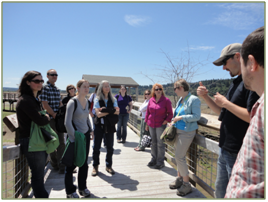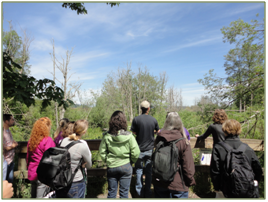GreenGov Spotlight Communities demonstrate how existing coordination efforts across the Federal Government allow agencies to pursue sustainability goals by leveraging their regional location and shared targets, as well as similar operational structure and needs. Spotlight Communities highlight projects that are replicable across the country. Spotlight Communities also emphasize that Federal facilities and installations are not only part of the Federal Government, they are an important member of their local community and often work closely with local stakeholders to pursue sustainability goals. When Federal facilities and installations are more efficient and sustainable, the surrounding area benefits from these actions. Local benefits could include reduced demand on the local power grid, reduced road congestion, or conservation of potable water.
The six Spotlight Communities that were selected for this initiative demonstrated how collaboration across Federal agencies on energy and sustainability can result in sustainability across our Nation. Projects ranged from a bike to work challenge to improved efficiency of water cooling towers. Spotlight Communities are a critical tool to reach shared sustainability goals and targets and will provide valuable lessons in order to help other Federal agencies, communities and stakeholders achieve similar success. Spotlight Communities demonstrate that a sustainable government is a smart government that leverages resources. Spotlight Community achievements will be featured in the monthly GreenGov Leader Spotlight section.
The White House Council on Environmental Quality (CEQ) prepared a final report highlighting the results of these Spotlight Communities. The leadership demonstrated throughout the Spotlight Communities initiative is apparent in the outcomes and lessons learned described in this document. The findings and results will help pave the way for future projects in other regions, whether they are conducted by Federal entities, state and local governments, area businesses or non-profit organizations.
Participating communities are recognized by CEQ for their coordination and sustainability efforts. Selected Spotlight Communities include 14 different agencies across the Nation. The selected communities are described below:
Car Sharing
Who: Peace Corps, General Services Administration and the Environmental Protection Agency
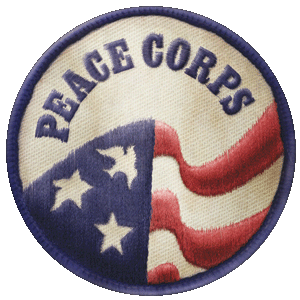
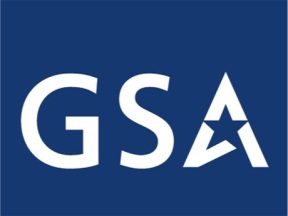

Where: Chicago, IL
Background: Peace Corps' Chicago regional office maintains sixteen office-based recruiters and three GSA leased vehicles. The vehicles are used for recruitment trips to various universities across an eleven state region. Because Peace Corps vehicles often remain unused, there are opportunities to recapture cost by analyzing changes to the fleet. The pilot asks whether car sharing is a feasible management option to recapture cost associated with underutilized vehicles while helping achieve Executive Order targets.
What will happen in 2013: This initiative, focused in Chicago, plans to create a roadmap to vehicle sharing with other agencies, and explore commercial car sharing services through the GSA schedule. The pilot aims to demonstrate that interagency partnerships can assist Peace Corps achieve Executive Order targets, contribute to a better use of financial resources, and positively impact agency goals.
In the next year, the pilot will provide best practices for other small to medium sized agencies looking for flexible fleet solutions. The pilot aims to demonstrate that interagency partnerships can assist Peace Corps achieve Executive Order targets, contribute to a better use of financial resources, and positively impact agency goals.
Back to Top
Federal Aggregated Solar Procurement Pilot
Who: EPA, General Services Administration (GSA), Forest Service, Department of Energy - Federal Energy Management Program (FEMP) and Lawrence Berkeley National Laboratory


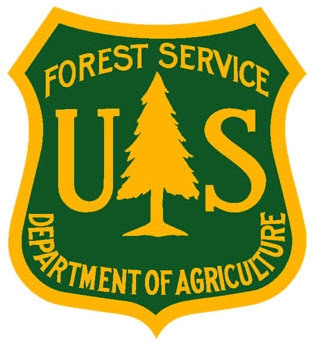
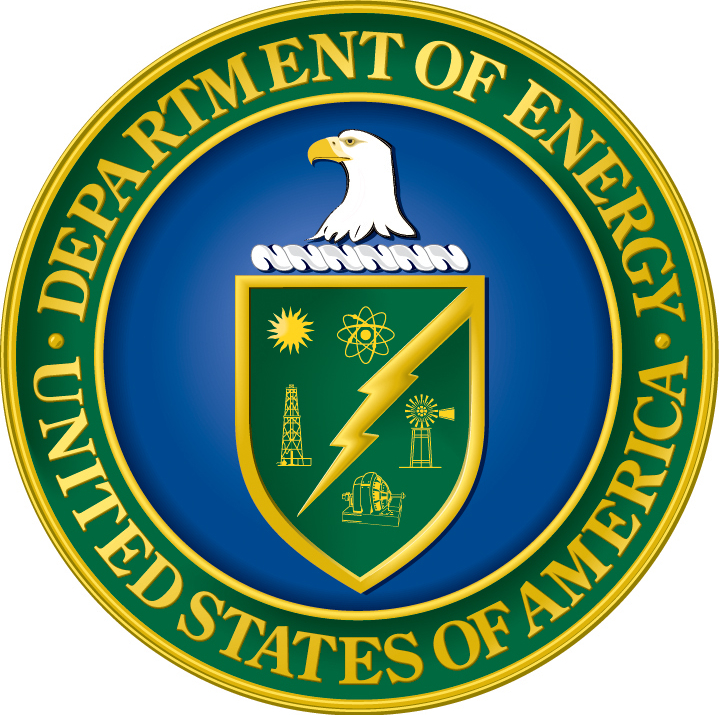
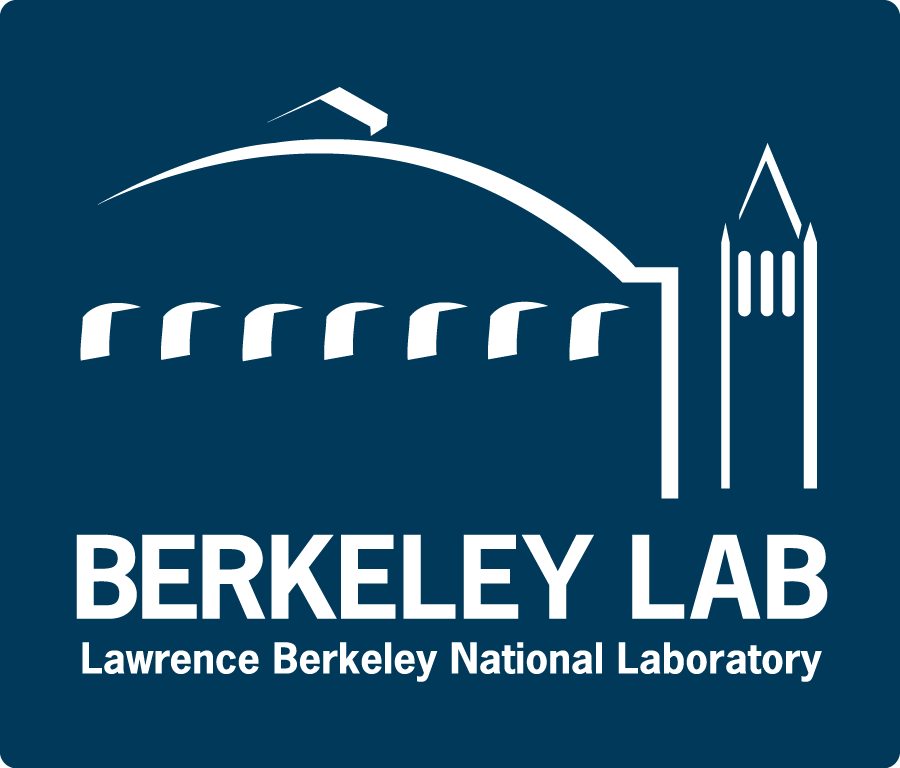
Where: Greater Northern California
What will happen in 2013: The renewable energy procurement project in Northern California brought together multiple Federal agencies and one private company to demonstrate that combined procurement offers economies of scale, resulting in lower electricity bills for individual sites, and increases the Federal Government's renewable energy usage.
EPA Region 9 convened a team of Federal entities interested in procuring renewable energy produced from solar panels on rooftops or carports at their facilities. GSA reps are using their contracting expertise to lead the procurement and DOE's Lawrence Berkeley National Laboratory is conducting the initial solar site surveys for the potential properties and assisting with the contracting process.
The solicitation will be publicized on the www.fbo.gov website when complete.
Back to Top
Federal Bike to Work Month Challenges
Who: Lead Agencies: Department of Transportation's National Highway Traffic Safety Administration Region 10 and EPA Region 10
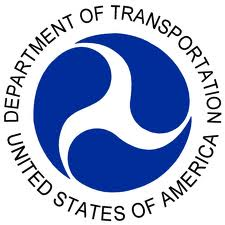

Non-Federal Stakeholders: Cascade Bicycle Club (Seattle, WA) and Bicycle Transportation (Portland, OR). (Provide free web-based services to the public to host month-long commute challenges, allowing bicycle commuters to self-report bicycle commuting miles.)
Where: Seattle, Boise, Anchorage and East Coast cities. In 2013 we saw expansion in many cities such as Seattle, Washington DC, Anchorage, and Philadelphia. We hope to see federal workers in new cities join us in this national challenge in 2014.
Background: May 2012 was the first Northwest Federal Challenge to happen during National Bike to Work Month, connecting multiple agencies for bicycle commuting. The one month challenge included 522 Federal riders from more than 20 agencies, two government branches, and four states, logging 65,274 miles back and forth to work during this inaugural challenge. This equates to 63,968 lbs of CO2 emissions saved and more than three million calories burned.
What will happen in 2013: The National Bike Month was May 2013. This program allows Federal agencies across varying facilities and installations to demonstrate leadership in their communities by showing their commitment to bicycle commuting through self-reporting of commuting mileage during month-long team challenges.
The Challenge was a big success with the help of many agencies. This year's competition expanded into multiple cities across the country, including DC. In total, more than 2,100 Federal employees logged over 240,000 miles during 20,000 biking trips back and forth to work. This is equivalent to saving roughly 240,000 pounds of CO2 emissions and burning 8.6 million calories.
The Department of Interior (DOI) took awards for "Most New Riders" and "Most Overall Riders for an Organization" with over 662 active team riders, 162 of them new to bike commuting.

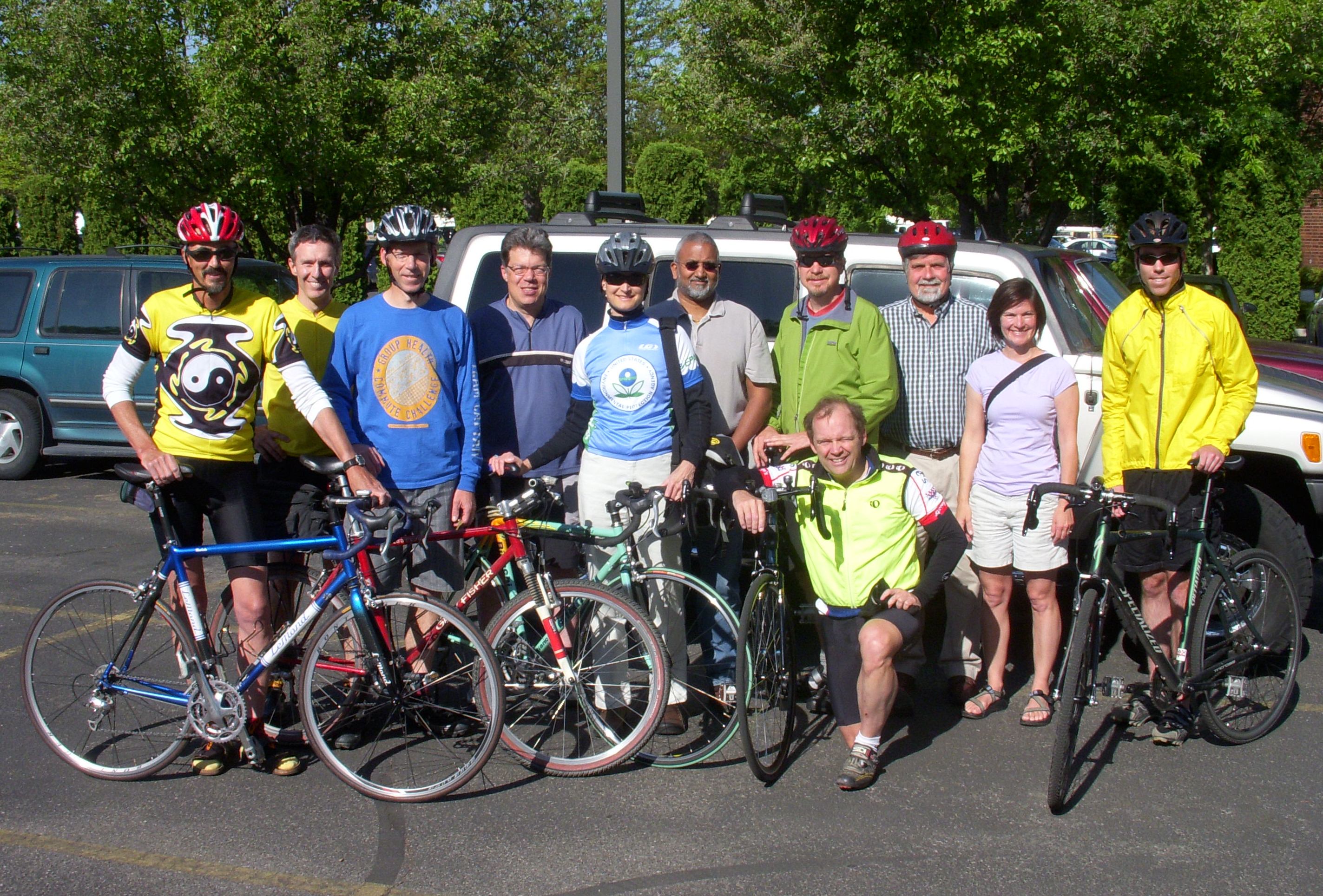
Back to Top
Comparing Non-Traditional Water Treatment Cooling Towers
Who: General Services Administration (GSA) Region 8, Department of Energy/National Renewable Energy Laboratory (DOE/NREL)



Where: Lakewood, Colorado
Background: Cooling towers exist in many Government buildings, consume large amounts of potable water, and contribute greatly to annual operation costs related to utilities and maintenance. Conventional cooling towers require the addition of chemicals and fresh water to the cooling tower water to prevent scale formulation, hinder biological growth, and inhibit corrosion in the chillers and piping systems. This project analyzed several non-chemical cooling tower water treatment systems that have the potential to reduce GSA building operation costs through decreased water and chemical costs, and reduce building energy costs through improved chiller efficiency.
In the fall of 2010, GSA Region 8, in collaboration with DOE's National Renewable Energy Lab and Denver Water, sought solutions to increase the cycles of concentration within three cooling towers located at GSA leased buildings (primary tenants of the buildings: EPA, USGS, and Bureau of Reclamation) and began a comparative study of three technologies.
What will happen in 2013: The four month study, completed in January 2013, uses performance data from 2011 and 2012. Initial results show that two of the three technologies were successful in accomplishing project conservation goals. The first technology evaluated reduced water use by 1.1 million gallons over a single summer in one cooling tower. This performance resulted in a rebate from Denver Water of $19,000 to the GSA Utility Rebate fund.
GSA used the results of these initial studies to determine implementation feasibility for Federal buildings nationwide to experience energy and water conservation and savings. The Denver Federal Center Buildings 25 and 67 dropped building water use over 15 percent in a single year and saved over 1 million gallons each by using new technologies. There is potential for an estimated reduction of 20.29 acre-feet of water annually if replicated campus wide. This water savings equates to enough water to supply an additional 50 households annually.
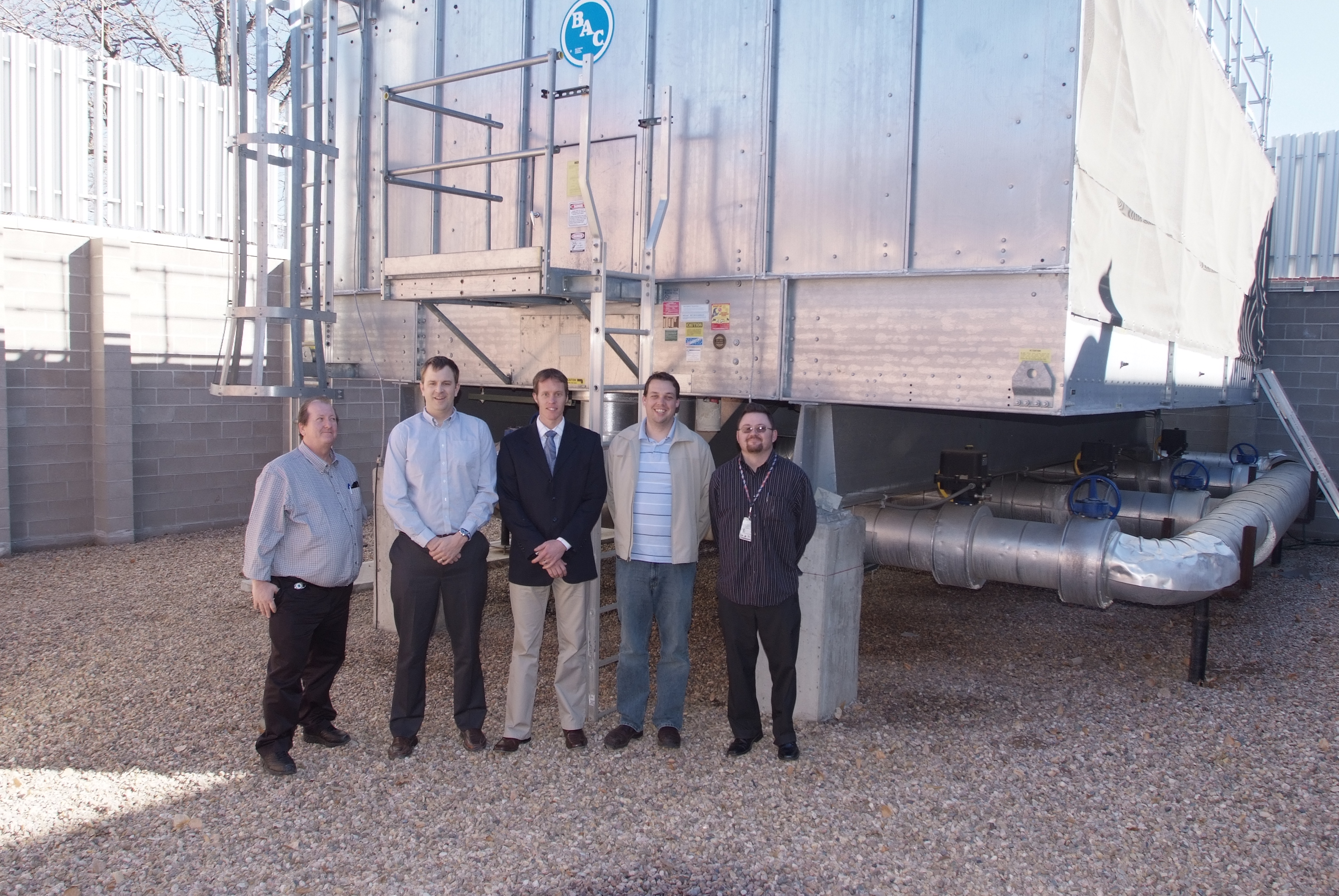
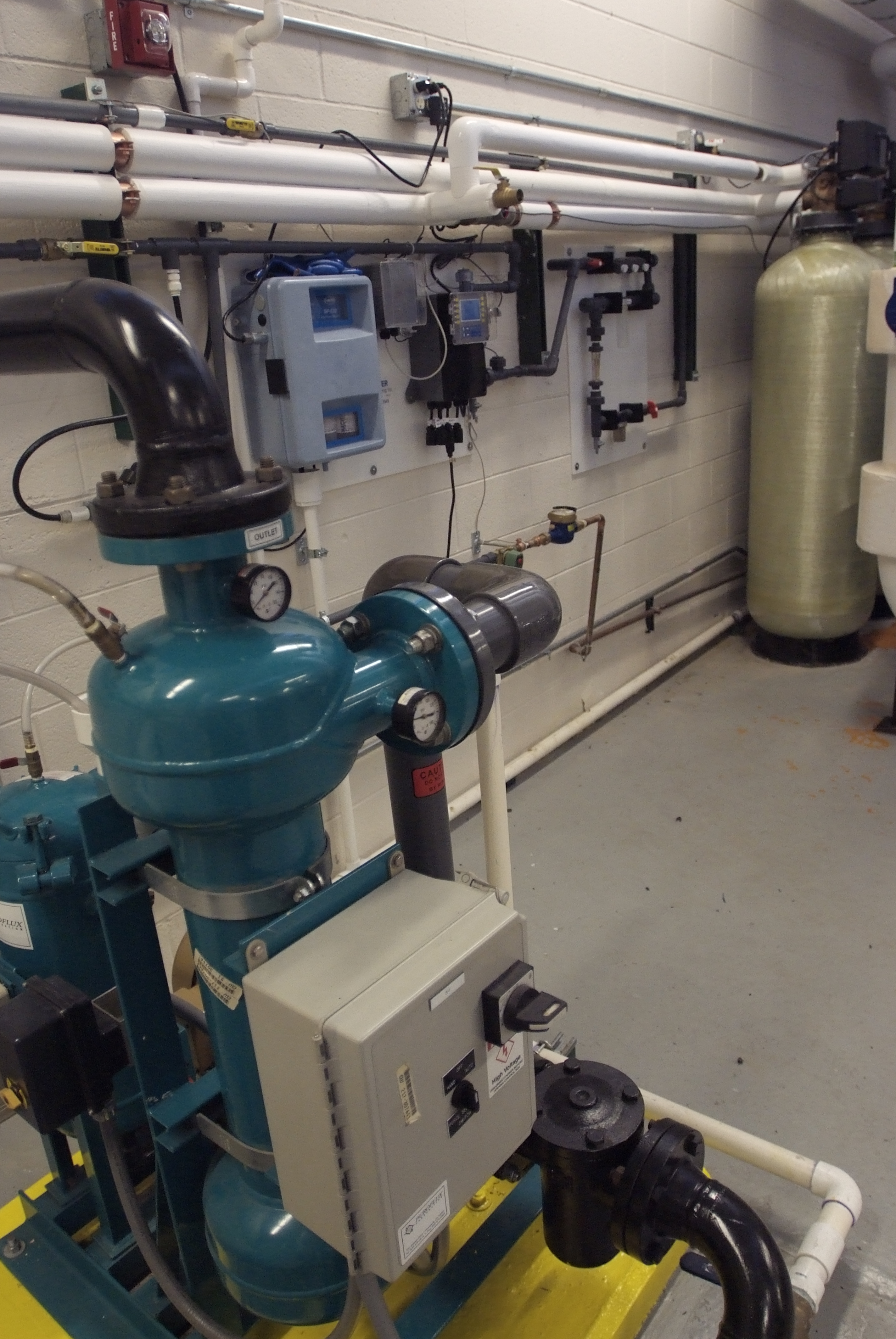 Back to Top
Back to Top
National Capital Region Climate Risks Preparation and Adaptation Pilot
Who:
GSA, EPA, Internal Revenue Service, National Capital Planning Commission, U.S. Global Change Research Program, National Oceanic and Atmospheric Administration, National Aeronautics and Space Administration, and District of Columbia Government



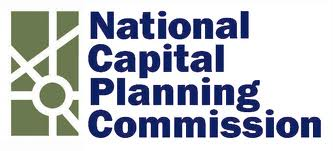

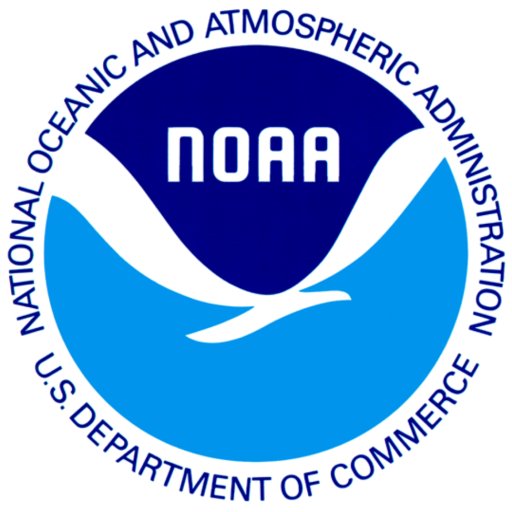


Where: Washington, D.C.
Background: The National Capital Region (NCR) Climate Risks Preparation and Adaptation Pilot builds capacity and confidence to address climate risks in a region that is home to the greatest number of Federal employees. The pilot leveraged the combined capabilities of participating agencies to evaluate risks and vulnerabilities in agency operations and devised a plan to manage climate impacts.
What will happen in 2013: GSA focused on the Internal Revenue Service building located at 1111 Constitution Avenue, NW, Washington, DC. The IRS identified this building as both mission critical and vulnerable.
In January 2013, an all-day scenario brought participants together to address extreme temperature, sea-level rise, and extreme precipitation impacts projected for the long-term. Impacts to specific systems, facility and supply chain assets, and identifying partners and funding needs were addressed in this work session. NASA provided downscaled climate data, IRS used their experiences from a flooding event at their facility in 2006, and NCPC highlighted their expertise in comprehensive planning.
From there, the team established priorities for creating a preparation and adaptation plan for the IRS building and surrounding areas. The plan is adaptable to many Federal buildings in the National Capital Region.
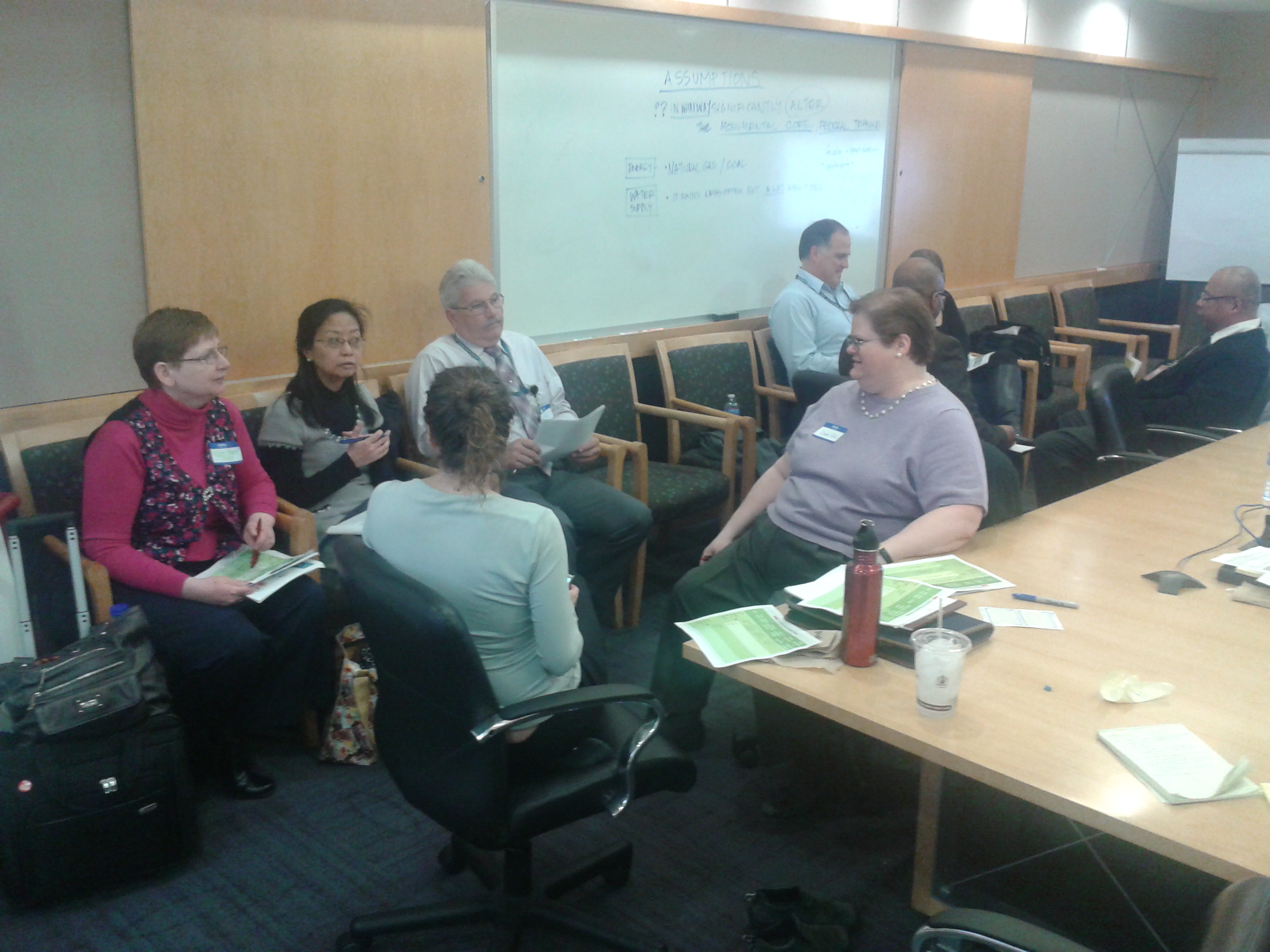
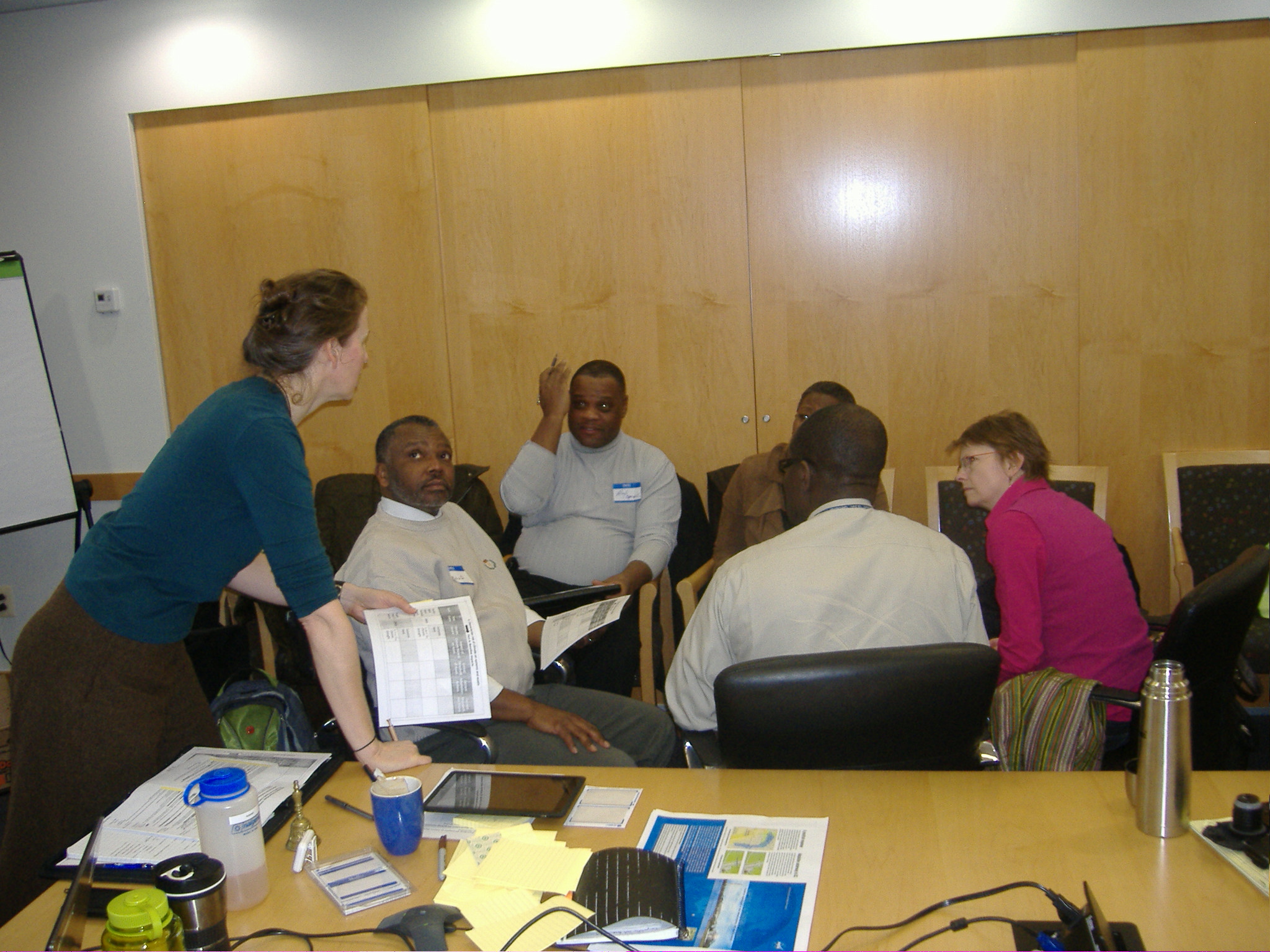 Back to Top
Back to Top
Seattle Federal Executive Board's Business Case for Sustainability
Who: The Seattle Federal Executive Board (SFEB) Officers represent the participating Seattle Area Federal Community and their respective agencies. The project is co-sponsored by the U.S. General Services Administration (GSA) Region 10 and the U.S. Environmental Protection Agency (EPA) Region 10 with the support and participation of the SFEB Executive Leadership Council who represent an additional 18 Agencies and the wider Federal community in western Washington.



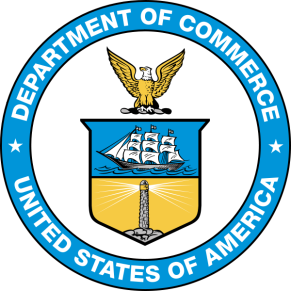

Where: Seattle, WA
Background: There are 28 Federal Executive Boards across the country, representing the 85% of Federal employees that work outside of the National Capital Region. Located in areas where there are significant Federal populations, the FEBs serve as a way for Agencies to form partnerships and share information based on their locations.
What will happen in 2013: The SFEB built a business case for shared sustainability efforts across the Federal Government. The SFEB compiled a collection of over 35 sustainability business case stories from the Seattle Federal agency community. This allowed the Board to monetize savings, identify common metrics, and publicize efforts contributing to a larger community impact. SFEB targeted energy and green meetings for improvement, policy development, education, and business cases.
In 2013, the Board and supporting agencies developed a story submittal form to make it easier for agencies to contribute business cases; aggregate regional financial impact based on stories submitted, agency participation, consolidated savings and other data; determined best methods to publicize successes; and, encouraged non-participating Federal communities in the region to contribute. This effort demonstrated how FEBs can play an integral role in coordinating regionally located Federal entities that are working towards shared Executive Order goals.
